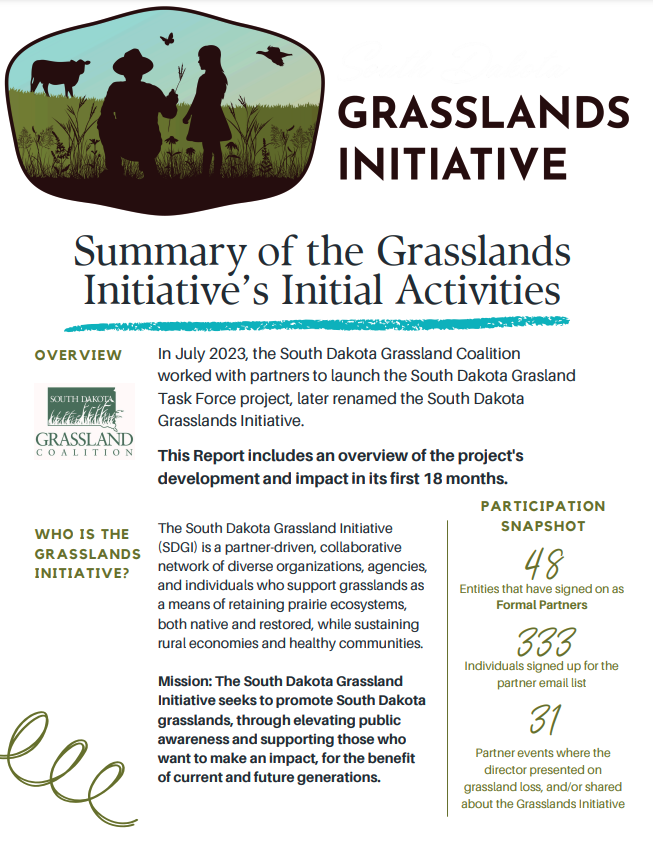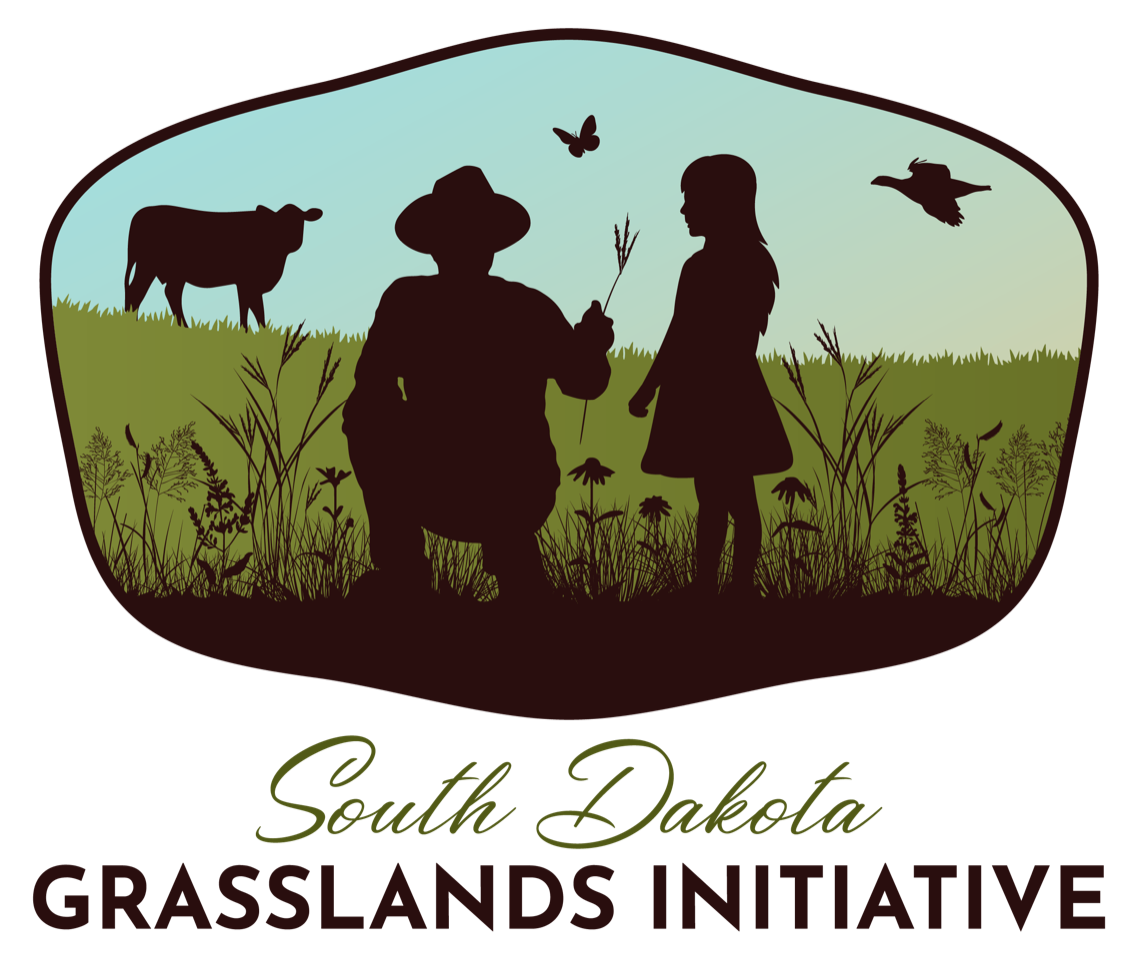Resources

Grasslands Initiative Initial Activities
In July 2023, the South Dakota Grassland Coalition worked with partners to launch the South Dakota Grassland Task Force project, later renamed the South Dakota Grasslands Initiative.
This Report includes an overview of the project’s development and impact in its first 18 months.
Quarterly Partner Newsletters
Stories, information & opportunities from your partners in South Dakota Grassland Conservation
Podcasts
Just like the variety of plants and life on our native grasslands, South Dakota is filled with diverse partners playing a role in supporting those grasslands. Learn about these partners on SD Grasslands Initiative’s podcast, Partners on the Prairie, where each episode will allow you to learn about those impacting South Dakota.
Interested in sharing about your organization through a Partners on the Prairie Podcast? Fill out the form at this link.
Partners on the Prairie Podcast
SDGI Workgroup Resources
The Grassland Education Workgroup has grab & go activities to provide hands-on lessons about the grasslands. These activities are available as totes with the materials and instructions for multiple activities designed to help children better understand and connect with the grassland ecosystem that is a core part of South Dakota. These activities have been selected and developed as hands-on activities that could be applicable to all ages
and are most appropriate for early elementary.
Click HERE for a complete overview and description of the materials included in the totes.
The totes are available to check out from the following locations (Click the location to request totes):
SD Grasslands Initiative Considerations on USDA’s Conservation Reserve Program (CRP).
What is CRP?
A voluntary conservation program that offers agricultural producers who agree to 10 to 15 year contracts with an annual rental payment in exchange for planting and/or maintaining approved perennial vegetation for the contract term on eligible farmland.
Concurrent Resolution 605
During 2024’s session, both the South Dakota House (Yeas 63, Nays 1) and Senate (Yeas 33, Nays 0) approved Senate Concurrent Resolution 605 affirming the value of grassland ecosystems and the importance of farmers and ranchers as managers.
Thank you to the bill’s sponsors: Senators Larson (
2024 South Dakota Legislature
A CONCURRENT RESOLUTION, Affirming the value of grassland ecosystems and the importance of farmers and ranchers as managers.
WHEREAS, it is the right of all South Dakotans to have access to clean water, clean air, and healthy landscapes; and
WHEREAS, there is an obligation to leave a net positive land legacy to future generations; and
WHEREAS, grassland ecosystems comprise one of the earth’s dominant biomes, covering up to forty percent of its terrestrial area; and
WHEREAS, grassland ecosystems improve water quality, increase filtration, and reduce runoff and flooding; and
WHEREAS, grassland ecosystems are essential to maintaining biodiversity, providing important habitat for myriad native wildlife, pollinators, livestock, and game animals; and
WHEREAS, the deep, living roots of a grassland ecosystem and native prairie allow for significant carbon storage and reduce nitrogen loss in the soil; and
WHEREAS, new opportunities for innovation and research in grassland management, soil health, and native prairie restoration for future generation are emergent; and
WHEREAS, ranchers increasingly use managed grazing and regenerative soil practices to ensure the sustainability of this ecosystem for future generations:
NOW, THEREFORE, BE IT RESOLVED, by the Senate of the Ninety-Ninth Legislature of the State of South Dakota, the House of Representatives concurring therein, that the grassland ecosystem of the Great Plains of North America can be part of the solution to improve water quality, support biodiversity, sequester carbon, maintain healthy soil, and provide habitat for wildlife, and that farmers and ranchers are crucial in conserving grassland ecosystems.
For more details, visit https://sdlegislature.
The United Nations recognize 2026 as the International Year of Rangelands and Pastoralists. Visit their website and learn how you can be involved in celebrating and bringing recognition to this event, including supporting a documentary film being developed in North America.























